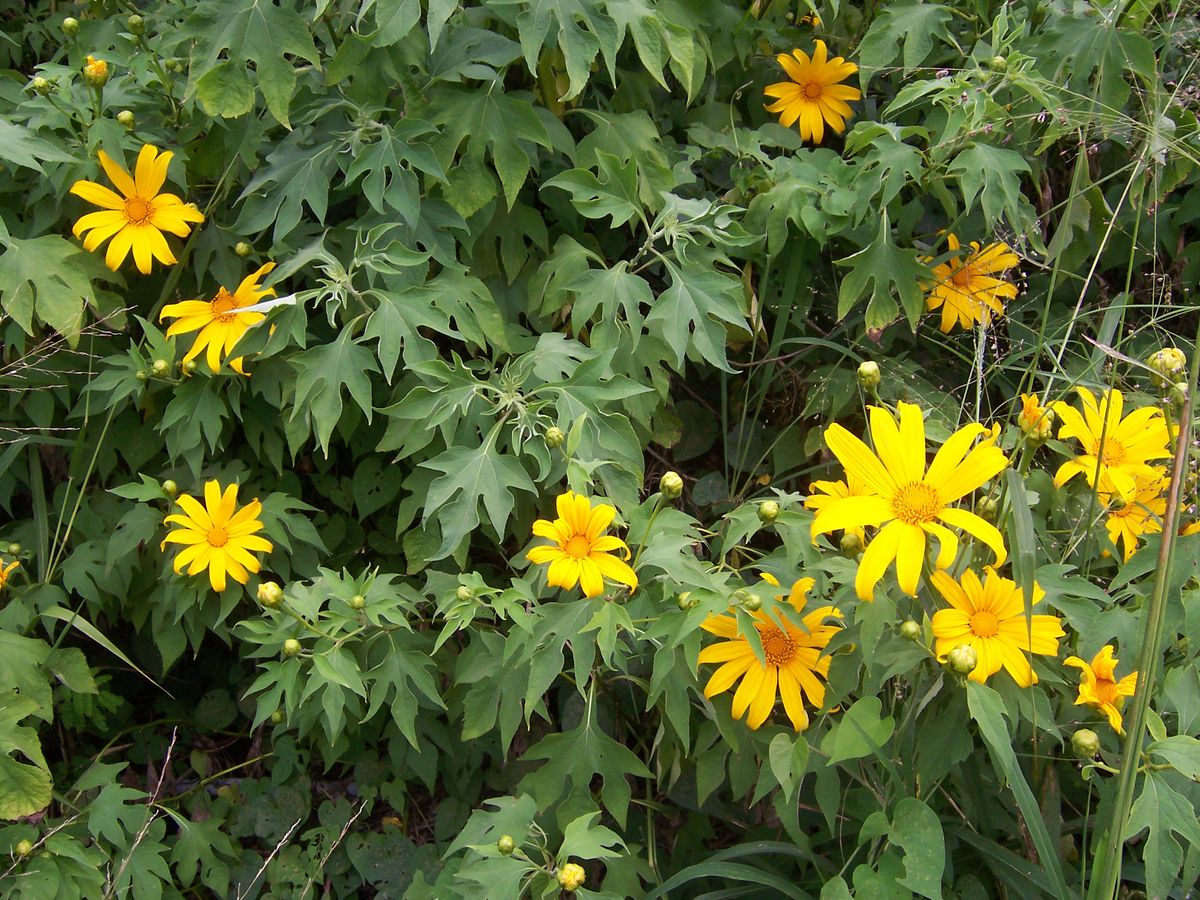
Tithonia, often called the Mexican sunflower, is a vibrant and hardy plant that can brighten any garden. But what makes this flower so special? Tithonia is not just a pretty face; it has a lot more to offer. From attracting pollinators like bees and butterflies to thriving in poor soil conditions, this plant is a gardener's dream. Did you know that Tithonia can grow up to 6 feet tall? Its bright orange and red blooms can last from summer through fall, providing long-lasting color. Whether you're a seasoned gardener or a newbie, learning about Tithonia can add a splash of color and life to your outdoor space. Ready to dig in? Let's uncover some fascinating facts about this amazing plant!
What is Tithonia?
Tithonia, commonly known as the Mexican sunflower, is a vibrant and hardy plant that brings a splash of color to gardens. Originating from Central America, this plant is not just beautiful but also fascinating in many ways.
- Tithonia belongs to the Asteraceae family, which includes daisies and sunflowers.
- The name "Tithonia" is derived from the Greek mythological figure Tithonus, who was granted eternal life but not eternal youth.
- Tithonia flowers are typically bright orange or red, making them a striking addition to any garden.
- These plants can grow up to 6 feet tall, creating a dramatic backdrop for smaller plants.
- Tithonia is known for its drought tolerance, making it a great choice for low-water gardens.
Growing Tithonia
Growing Tithonia is relatively easy, even for novice gardeners. Here are some interesting facts about cultivating this stunning plant.
- Tithonia thrives in full sun, requiring at least 6 hours of direct sunlight each day.
- Well-drained soil is essential for Tithonia, as it does not tolerate waterlogged conditions.
- These plants are typically grown from seeds, which should be sown directly into the garden after the last frost.
- Tithonia seeds germinate quickly, often within 5 to 10 days.
- Once established, Tithonia requires minimal maintenance, making it a low-effort plant for busy gardeners.
Benefits of Tithonia
Beyond its beauty, Tithonia offers several benefits to both the garden and the gardener.
- Tithonia attracts pollinators like bees, butterflies, and hummingbirds, which help with the pollination of other plants.
- The plant's large leaves provide excellent ground cover, helping to suppress weeds.
- Tithonia can be used as a natural fertilizer; its leaves decompose quickly, enriching the soil with nutrients.
- The plant's vibrant flowers can be cut and used in floral arrangements, adding a splash of color to indoor spaces.
- Tithonia is resistant to most pests and diseases, reducing the need for chemical treatments.
Tithonia in Traditional Medicine
Tithonia has been used in traditional medicine for various purposes. Here are some intriguing facts about its medicinal uses.
- In some cultures, Tithonia leaves are used to treat wounds and skin infections.
- The plant has been used to alleviate fevers and inflammation.
- Tithonia is believed to have antimicrobial properties, making it useful in treating bacterial infections.
- Some traditional remedies use Tithonia to relieve digestive issues like diarrhea.
- The plant is also used in some regions to treat malaria and other parasitic diseases.
Environmental Impact of Tithonia
Tithonia's impact on the environment is significant, both positively and negatively.
- Tithonia can improve soil quality by adding organic matter and nutrients as its leaves decompose.
- The plant's extensive root system helps prevent soil erosion, making it useful for stabilizing slopes and embankments.
- Tithonia can become invasive in some regions, outcompeting native plants and disrupting local ecosystems.
- In some areas, Tithonia is used in reforestation projects to help restore degraded lands.
- The plant's ability to thrive in poor soils makes it a valuable crop in regions with limited agricultural potential.
Fun Facts About Tithonia
Here are some fun and quirky facts about Tithonia that you might not know.
- Tithonia is sometimes called the "tree marigold" due to its large, marigold-like flowers.
- The plant's flowers are known to follow the sun, a phenomenon known as heliotropism.
- Tithonia is a favorite among butterfly enthusiasts, as it attracts a wide variety of butterfly species.
The Final Bloom
Tithonia, often called the Mexican Sunflower, is more than just a pretty face in the garden. Its vibrant orange and red blooms attract pollinators like bees and butterflies, making it a favorite for those looking to boost their garden's biodiversity. This hardy plant thrives in full sun and well-drained soil, requiring minimal care once established. Its ability to withstand drought conditions makes it a resilient choice for gardeners in various climates.
Beyond its beauty, Tithonia has practical uses too. Its leaves can be used as green manure, enriching the soil with nutrients. Plus, its tall, sturdy stems make it an excellent choice for cut flowers. Whether you're a seasoned gardener or just starting, Tithonia offers a splash of color and a touch of nature's resilience. Plant some in your garden, and enjoy the many benefits this versatile flower brings.
Was this page helpful?
Our commitment to delivering trustworthy and engaging content is at the heart of what we do. Each fact on our site is contributed by real users like you, bringing a wealth of diverse insights and information. To ensure the highest standards of accuracy and reliability, our dedicated editors meticulously review each submission. This process guarantees that the facts we share are not only fascinating but also credible. Trust in our commitment to quality and authenticity as you explore and learn with us.
